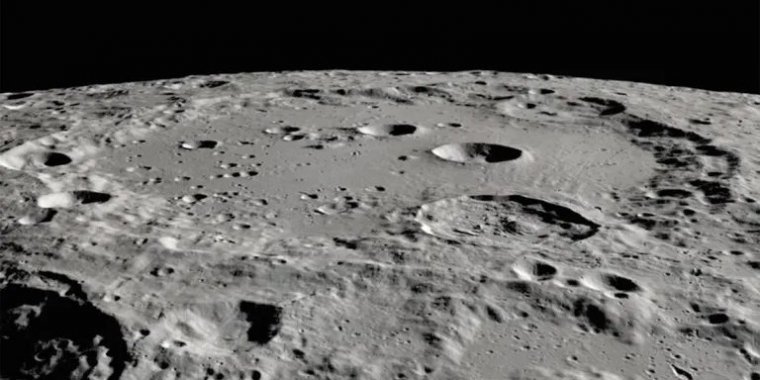| News / Space News |
NASA Experiment Sheds Light on Highly Charged Moon Dust
Researchers are studying data from a recent suborbital flight test to better understand lunar regolith, or Moon dust, and its potentially damaging effects as NASA prepares to send astronauts back to the lunar surface under the Artemis campaign.

Moon. Photo: NASA/USGS
The experiment, developed jointly by NASA and the University of Central Florida, sheds light on how these abrasive dust grains interact with astronauts, their spacesuits, and other equipment on the Moon.
The Electrostatic Regolith Interaction Experiment (ERIE) was one of 14 NASA-supported payloads launched on Dec. 19 aboard Blue Origin’s New Shepard uncrewed rocket from Launch Site One in West Texas.
During the flight test, ERIE collected data to help researchers at the agency’s Kennedy Space Center in Florida study tribocharging, or friction-induced charges, in microgravity.
The Moon is highly charged by phenomena such as solar wind and ultraviolet light from the Sun. Under those conditions, regolith grains are attracted to lunar explorers and their equipment – think of it as similar to the static created by rubbing a balloon on a person’s head. Enough regolith can cause instruments to overheat or not function as intended.
“For example, if you get dust on an astronaut suit and bring it back into the habitat, that dust could unstick and fly around the cabin,” said Krystal Acosta, a researcher for NASA’s triboelectric sensor board component inside the ERIE payload.
“One of the major problems is that there’s no way to electrically ground anything on the Moon. So even a lander, rover, or really any object on the Moon will have polarity to it. There’s no good solution to the dust charging problem right now.”
A Kennedy team designed and built the triboelectric sensor board inside the ERIE payload, which reached an altitude of 351,248 feet aboard New Shepard.
In the microgravity phase of this flight, dust grains simulating regolith particles brushed up against eight insulators within ERIE, creating a tribocharge.
The electrometer measured the negative and positive charge of the simulated regolith as it traveled through an electric field applied during microgravity.
“We want to know what causes the dust to charge, how it moves around, and where it ultimately settles. The dust has rough edges that can scratch surfaces and block thermal radiators,” said Jay Phillips, lead of Electrostatics Environments and Spacecraft Charging at NASA Kennedy.
The ERIE payload spent approximately three minutes in microgravity during the New Shepard capsule’s suborbital flight, which lasted about 10 minutes before landing safely back on Earth in the Texas desert. A camera recorded the interactions, and Philips and his team are reviewing the data.
The results will inform applications for future missions destined for the lunar surface. For example, by using triboelectric sensors on a rover’s wheels, astronauts can measure the positive and negative charges between the vehicle and regolith on the lunar surface.
The end goal is to develop technologies that will help keep it from sticking to and damaging astronaut suits and electronics during missions.
YOU MAY ALSO LIKE





